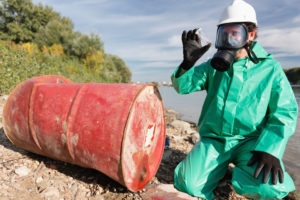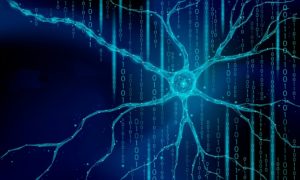
AI Enlisted to Track Complex Chemical Interactions in People

(Egorov Artem/Shutterstock)
If you like multi-variant statistics, then you’re going to love what Melissa Strong, PhD., is doing at IndiOmics, the biotechnology company she founded to gain a greater understanding on how chemicals interact with — and possibly harm – people that come into contact with them every day.
For starters, there are about 84,000 chemicals registered with the Environmental Protection Agency (EPA), according to Strong. From sunscreens and pesticides to plasticizers and hardeners, the average American contains within their body a unique chemical cocktail brewed from their specific path through this world.
Factor in different genetics, medical histories, and environmental factors, and you have the sort of combinatorial explosion that is unworkable in the traditional scientific sense. “It’s never only X and Y,” Strong says. “It’s A through X and Y. It’s honestly A-Z and another set of A-Z.”
Strong concedes that the large number of variables makes it impossible to do the sort of controlled study that is the gold standard among scientists. Ethics also precludes researchers from injecting possibly carcinogenic material into humans to see what happens. (Finding a control group that is free from chemical contamination poses another problem.)
But the inability to do double-blind studies doesn’t mean there’s no path forward for studying how chemicals interact with human physiology . It just means that researchers need to adapt their methods to the reality of the situation. The good news – if it can be called that — is that the world presents a huge pool of chemistry-laden candidates for studying human-chemical interactions. All it needs is somebody to start sorting it out.
That’s essentially what IndiOmics is setting out to do.
Familial Chemistry
Growing up in eastern North Carolina, Strong became aware at a young age the negative impact that chemicals can have on people’s lives. When her brother was born with a brain abnormality, doctors looked for signs of the problem in the Strong family’s genetic profile. When nothing could be found, concerns turned to environmental variables.
A possible culprit to the brain abnormality was found when a local dry cleaning company was discovered to be disposing of chemicals by pouring them down the drain. The chemicals seeped into the groundwater supply, and eventually into the well serving Strong’s home.
Strong’s brother wasn’t the only person in the area who suffered from possible effects of illegal chemical dumping. Clusters of diseases popped up in the area around Wilmington, Jacksonville, and Marine Corp Base Camp Lejeune, including an unusually large number of male military veterans who developed breast cancer.
“Plenty of people had children born with congenital effects,” Strong tells Datanami in a recent interview. “It was all linked to the same case — dry cleaning solvents and other things that were getting dumped on base in the 70s, 80s, and 90s. When you have clusters like that, the epidemiology gets really compelling to say, okay, we have a known group of people, known exposure, known health effects. It would almost be impossible to say this could have happened any other way.”
AI to the Rescue
Based in Wilmington, IndiOmics is tackling the problem in several ways. That includes a detailed questionnaire on individual’s histories; wet lab work to explore impacts of specific chemicals on living tissue; and data science and computer modeling work that harnesses the results of the questionnaire and lab work, as well as data from other sources, such as the CDC’s annual report on exposure to environmental chemicals.
The questionnaire probes people with questions that seem unusual at first. Do you use plastic containers to heat food or liquids in the microwave? Do you park in closed garage connected to the house? Do you use sunscreen? Do you drink well water? Were you breastfed as an infant? Did you eat school lunch when you were a child? The answers to these questions provide important variables into discerning the pathways that chemicals take into our bodies.
IndiOmics is currently recruiting individuals for the next phase of its research: collecting saliva and urine samples for laboratory testing. These samples will not only indicate whether traces of hundreds of chemicals or their metabolites are present, but also measure the inflammatory response of the body.
Through its various efforts, the company is taking both a broad and a narrow approach to identifying links between chemical exposure and incidence of disease. For instance, during the recent SAS Global Forum in Dallas, Texas, Strong was invited on stage to demonstrate the use SAS software to identify correlations between sunscreen use and cancer. In the demo, which used CDC data, Strong used SAS’s automated machine learning function to show that chemicals contained in sunscreens was highly correlated with cancer.
But not all of IndiOmics efforts will be focused on specific chemicals, like the oxybenzone and avobenzone that is often found in sunscreens today. Instead, Strong will be on the lookout for unanticipated correlations that appear out of the blue.
“It’s easier to focus on specific exposures in some cases,” Strong says. “But a lot of the unanswered science is how this very large mixture, a cocktail of chemicals, is interacting in thousands of people across the board. We don’t only want to include people who have been highly exposed. We actually want a diverse population of individuals to answer these questions as directly as possible. So in that case, we’re doing a larger sweep of known exposure and different markers.”
Minimizing Uncertainty
Strong has several goals in mind for the company. First and foremost, she hopes to discover ways that chemicals are hurting people’s health. To that end, she has connections with several state and federal agencies that are willing to take a look at her research, ostensibly for possible civil or criminal actions.
But IndiOmics has other goals. The company started life as a non-profit, but now Strong is using the social enterprise business model. To that end, Strong envisions something along the lines of the 23 and Me business model: selling chemical-testing kits to individuals and presenting the physiological results in an easy-to-consume dashboard, complete with personalized recommendations. Eventually, even insurance companies may pay for the kits, if it improves people’s health, she says.
Not only have data science tools grown more robust, but the amount of data that’s available to be analyzed has grown tremendously in recent years, Strong says. “People are very eager at this point for reliable conclusions, produced by professionals using ML and AI.”
However, considering the previously discussed inability to conduct rigorous scientific studies, Strong recognizes that extreme care must be taken in how the data is collected and analyzed. Without the ability to determine causation with 100% certainty, the best that Strong can do will be amassing correlations between causes and effects that are so compelling that they can’t be dismissed.
That will require minimizing the level of uncertainty to an acceptable point. It also impacts how one talks about it.
“To get to causation, conventionally, you’re going to have to design a controlled study to really minimize the influence of outside variables, which is obviously going to be very hard if you’re talking about a cocktail of chemicals,” Strong says.
“I might not be able to say ‘X causes cancer.’ But I’m going to say, A-Z, this unique combination in this person, is highly correlated with increased risk for disease now and in the future,” she continues. “We’re going to get to where we say ‘more likely than not.’ That’s usually how it’s going to be worded, legally.”
If Strong’s data science work has the sort of impact that she envisions – where human bodies are no longer the unintended petri dishes for millions of chemical experiments – then the words we use to talk about it will not be important at all.
Related Items:
How Spark and Hadoop Are Advancing Cancer Research
Big Data and the White House’s Cancer Moonshot
Big Data Helps Personalize Cancer Treatments

































